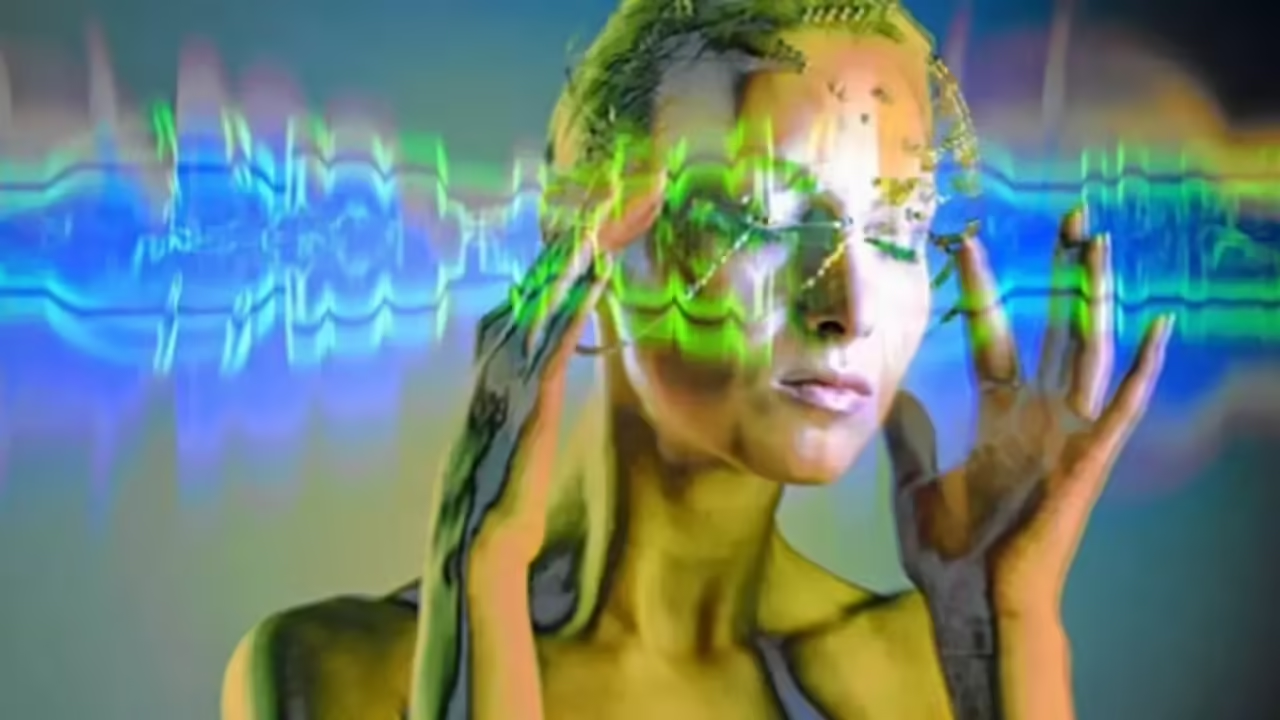
In the ever-evolving landscape of communication, we find ourselves on the brink of a transformative breakthrough – digital telepathy. This concept, once confined to the realm of science fiction, is becoming increasingly plausible in our technologically advanced world. Imagine a mode of communication that transcends spoken or written language, allowing us to exchange thoughts, ideas, and emotions directly from one mind to another. The implications of such a breakthrough are profound, impacting fields ranging from healthcare to education, and potentially reshaping the way we connect with one another.
A Glimpse into the Future
Digital telepathy, often referred to as brain-computer interfaces (BCIs), is at the forefront of cutting-edge research. BCIs enable direct communication between the brain and external devices, bypassing traditional language barriers. These interfaces, combined with advancements in neurotechnology, are making it increasingly feasible to imagine a future where telepathic communication is not only a reality but an integral part of our lives.
Breaking Language Barriers
One of the most significant advantages of digital telepathy is its ability to break down language barriers. In a world where over 7,000 languages are spoken, misunderstandings and miscommunications can be all too common. Digital telepathy could serve as a universal language, transcending linguistic differences and connecting people across the globe seamlessly. This has the potential to revolutionize international relations, trade, and cultural exchange.
Empowering Those with Disabilities
For individuals with physical disabilities or communication disorders, digital telepathy holds the promise of empowerment. Imagine a world where people who cannot speak or use traditional communication methods can express their thoughts and feelings directly through brain-computer interfaces. This technology has the potential to give a voice to those who have been silenced by physical limitations, allowing them to participate fully in society.
Education and Learning Enhancement
Digital telepathy could also revolutionize education. Students could instantly transfer knowledge and information, making traditional teaching methods seem antiquated. Teachers could better understand their students’ needs and thought processes, leading to more personalized and effective education. The possibilities are limitless in the realm of cognitive enhancement and accelerated learning.
Ethical and Privacy Concerns
With great power comes great responsibility, and the advent of digital telepathy brings ethical and privacy concerns to the forefront. Issues of consent, privacy, and security in the digital telepathy landscape must be addressed. As we venture into this uncharted territory, it’s essential to establish guidelines and regulations that protect individuals and their thoughts.
The Road Ahead
The journey towards making digital telepathy a reality is filled with scientific challenges and ethical dilemmas. Researchers are working diligently to develop secure and user-friendly brain-computer interfaces while considering the potential impact on society. As we progress, it’s essential to engage in open discussions about the ethical and practical implications of this technology.
In an increasingly interconnected world where global communication is paramount, the concept of a universal language has fascinated thinkers and innovators for centuries. Imagine a world where people from different corners of the Earth could effortlessly converse, transcending linguistic and cultural boundaries. The idea of a universal language has been a recurring theme in science fiction, a subject of philosophical debate, and a linguistic aspiration. But can this vision become a reality in the modern age of technology and communication?
The Pursuit of a Universal Language
The notion of a universal language has a long and storied history. It was a central theme in projects like the 17th-century “a priori” language, designed to be logical and simple. Philosophers such as John Locke and Gottfried Leibniz contemplated its possibility. However, their dreams were often stymied by the complexity and rich cultural diversity of language.
The Influence of Lingua Franca
Historically, various pidgin and creole languages, such as Lingua Franca, emerged to facilitate communication among diverse linguistic communities. These simplified languages were pragmatic solutions for trade, diplomacy, and social interaction. While not truly universal, they exemplify the need for effective cross-cultural communication.
Modern Advances: The Role of Technology
In the digital age, technology is shaping the way we communicate. Machine translation and artificial intelligence have brought us closer to the possibility of a universal language. Platforms like Google Translate can bridge language gaps, making information accessible across linguistic boundaries. While not flawless, these technologies represent significant progress.
Constructed Languages: Esperanto and Beyond
Constructed languages, or conlangs, have played a role in the pursuit of a universal language. Esperanto, created in the late 19th century, aimed to provide a politically neutral and culturally inclusive language for international communication. Though it hasn’t become a global lingua franca, it boasts a dedicated community of speakers.
Challenges and Considerations
The quest for a universal language is not without challenges. Language is deeply intertwined with culture, identity, and history. Many people take pride in their native tongues, and the idea of adopting a single, neutral language may be met with resistance. Ethical and political concerns also loom large, as the power dynamics of language can be complex.
The Future of Communication
While the dream of a universal language has not been fully realized, technology has brought us closer to achieving seamless cross-linguistic communication. In an increasingly interconnected world, the ability to bridge language barriers is more vital than ever. It is likely that the future of communication will involve a combination of technology, constructed languages, and multicultural understanding.
The Telepathic Experience
One of the most fascinating aspects of digital telepathy is the idea of experiencing another person’s thoughts and emotions firsthand. This concept goes beyond simple communication; it’s about sharing experiences and feelings in a profoundly intimate way. Imagine being able to convey the sensation of tasting a delicious meal, the joy of witnessing a breathtaking sunset, or the empathy for someone going through a difficult time directly to another person’s consciousness. Digital telepathy opens the door to a new dimension of emotional connection.
The Science Behind Digital Telepathy
To understand how digital telepathy works, it’s essential to grasp the scientific underpinnings. Brain-computer interfaces (BCIs) play a pivotal role in this communication method. BCIs are devices or systems that directly link the brain with external technologies. Electroencephalography (EEG) is one such technology that records electrical activity in the brain. By interpreting these brainwave patterns, BCIs can translate thoughts and intentions into actionable commands.
Cognitive Empowerment
Digital telepathy holds enormous potential for individuals with physical disabilities. It can provide a means of expression and communication for those who cannot speak or use traditional methods. For people living with conditions such as amyotrophic lateral sclerosis (ALS) or locked-in syndrome, digital telepathy could offer newfound independence and improve their quality of life significantly.
Educational Transformation
The impact of digital telepathy on education cannot be overstated. Imagine a classroom where teachers can instantly gauge students’ comprehension and tailor their teaching accordingly. It could facilitate personalized learning experiences that cater to each student’s unique needs, ultimately improving educational outcomes. Furthermore, remote learning could be made more engaging and interactive through the direct exchange of thoughts and ideas, erasing geographical barriers.
As with any groundbreaking technology, digital telepathy presents its share of challenges. Ethical questions about privacy and consent are paramount. How do we protect our thoughts from unwanted intrusion? What safeguards must be in place to ensure individuals retain control over their minds? These questions necessitate careful consideration as the technology develops.
Additionally, addressing the potential misuse of digital telepathy is crucial. Security measures will need to be established to prevent unauthorized access to people’s thoughts, and legal frameworks may need to adapt to this new reality.
Emerging Technologies: Tools for Digital Telepathy”
In the ever-advancing landscape of technology, we stand on the cusp of a remarkable era – one where communication transcends the limitations of spoken or written language. Digital telepathy, often associated with brain-computer interfaces (BCIs), is gradually moving from the realm of science fiction into reality. These emerging technologies hold the promise of enabling direct communication from one mind to another. In this article, we explore the cutting-edge technologies that are propelling us toward the era of digital telepathy and the potential they hold.
Unraveling the Mysteries of the Mind
To understand digital telepathy, we must first look at the technologies that are helping us delve deeper into the complexities of the human mind. The advent of advanced neuroimaging techniques, such as functional magnetic resonance imaging (fMRI) and electroencephalography (EEG), has opened a window into the brain’s activities. These tools enable us to record and analyze brain signals, which are fundamental for the development of BCIs.
Brain-Computer Interfaces: Bridging the Gap
At the heart of digital telepathy lies the development of BCIs. These devices, like the Neuralink by Elon Musk and the BrainGate system, are designed to establish direct communication channels between the brain and external technology. BCIs can decode the neural signals responsible for our thoughts and translate them into understandable commands for computers and other devices. These interfaces are instrumental in translating the dream of telepathic communication into reality.
Neural Implants and Neuroprosthetics
In recent years, neural implants and neuroprosthetics have gained momentum in the field of digital telepathy. These devices involve surgically implanting electrodes into the brain, allowing for a more precise and instantaneous exchange of information. They have significant implications for individuals with disabilities, as they can provide enhanced control over prosthetic limbs and even restore lost sensory perceptions.
Advancements in Machine Learning
The success of digital telepathy relies heavily on machine learning and artificial intelligence (AI). These technologies are instrumental in interpreting and translating brain signals into meaningful communication. Machine learning algorithms can recognize patterns in neural activity, allowing for improved accuracy and efficiency in brain-computer interfaces.
Natural Telepathy vs. Artificial Telepathy: Differences
Both natural and artificial telepathy involve the transmission of thoughts or information from one mind to another without conventional communication methods. However, there are significant differences between natural and artificial telepathy:
Natural Telepathy:
Inherent to Human Abilities: Natural telepathy refers to the belief in the innate human capacity to communicate telepathically, without the use of technological devices. It’s seen as a psychic or paranormal ability that some individuals may possess.
Controversy and Lack of Scientific Evidence: Natural telepathy is a highly controversial topic and lacks robust scientific evidence to support its existence. It is often considered a pseudoscience, and skeptics question the validity of claims related to natural telepathy.
Uncontrolled and Unpredictable: If natural telepathy were to exist, it would be uncontrolled and unpredictable. People who claim to possess this ability often report experiences of receiving thoughts or emotions from others without their intention or control.
Artificial Telepathy:
Technology-Based: Artificial telepathy involves the use of technology, particularly brain-computer interfaces (BCIs) and other devices, to establish direct communication between individuals’ brains. It is a scientific and technological approach to achieve telepathic communication.
Supported by Research and Advancements: Unlike natural telepathy, artificial telepathy is grounded in scientific research and has seen significant advancements in the field of neuroscience and neurotechnology. There are ongoing experiments and developments in BCIs and neural interfaces to enable brain-to-brain communication.
Controlled and Purposeful: Artificial telepathy, if successful, would be a controlled and purposeful form of communication. It relies on the use of technology to establish a link between individuals’ brains, allowing them to share thoughts and information intentionally.







